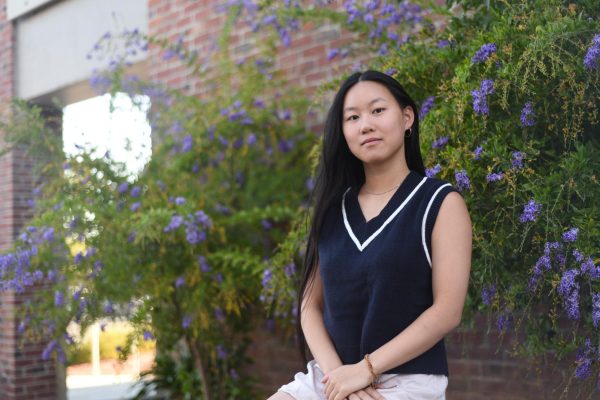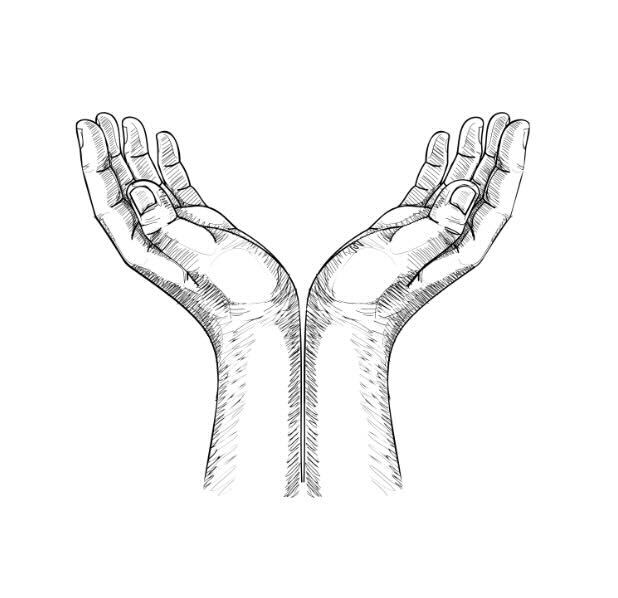BZ: Hi, I’m Ben.
AY: Hi, I’m Alyssa.
BZ: Today we’re interviewing Morgan Mayhew, a Monta Vista alum who is a prospective producer in the animation industry.
AY: Here’s our conversation with her.
MM: I’m Morgan Mayhew, and my pronouns are she/her. I actually graduated from Monta Vista in 2019 and then went on to pursue animation illustration at San Jose State University’s BFA program. And then I recently graduated from that. I originally was going to be a visual development artist, and then I transitioned into 3D modeling, and then eventually transitioned from that into producing.
BZ: To start off, what are some of your favorite animated films?
MM: I love “Zootopia” for sure. That’s honestly one of my favorites. But I’m also kind of a “Frozen” nerd. Specifically, I don’t know, I have this distinct memory of — in 2013, I think, is when it came out — I watched it in the theater with my mom, and I just remember it was so magical. And I feel like I’ve had an obsession with snow ever since, because of tha. All of my art projects have included snow in some way or shape or form. But yeah, I think those are kind of my two favorites.
AY: What about those two films was so special, and do you think now your background in animation has added any new perspectives?
MM: With animation, you can kind of use your imagination a lot more. For example, going back to “Zootopia,” you can tell a story about racism and the problems that were occurring in the film, without directly having to show that on screen. And so I think that there’s just a different opportunity for metaphor, and for to be able to bridge that kind of that gap between adults being able to enjoy the film and kids being able to enjoy the film.
MM: Definitely, I have an appreciation for how much time it takes to make such an amazing film. Because for my last year in school, I produced our short film for our capstone. Through producing that, I’ve realized producing a film or being a part of a film in any capacity, whether it’s four minutes, like my film was, or over an hour, like a feature film is, is so much work. It’s amazing to me.
BZ: So how does an animation film like that start?
MM: Well, what’s nice in the short film scene is that all you need to do is have an idea. So the best way to start, specifically if you’re just looking to make a project, is starting out with a log line. So that’s one sentence of, “OK, what is this story about? What’s the point?” Like, “This film explores the importance of sisterhood through a wacky race to the bathroom.” Something like that. I don’t remember what our exact log line was for our film, but that would be where you would start.
MM: But obviously, to get to that log line, you need hundreds of ideas. You just have a brainstorming session, go to Starbucks, start typing. It all starts with idea generation and then narrowing that down, and then from there we spent an entire summer just making storyboards and saying, “What are the specific gags that we need? What kind of ending do we want?” We went through five or six different ending possibilities — at least, maybe more, actually. So I think with the start, it’s all about being open and being willing to find, “OK, what is the best idea?” Not just something ChatGPT can spit out at you, but what is something that will resonate with you? I also think drawing from your own personal experience is huge, because it’s more unique and it’s more specific.
BZ: So how did you first decide to go into animation?
MM: In sixth grade, my dad got me my first drawing tablet and this funny little program called Manga Studio, and from there, I became obsessed with drawing little anime characters and posting them on my little Pinterest board. It’s kind of funny. You could probably find that stuff out there now, and it’s very cringe, but it’s still, you know, it’s my little origin story.

AY: What are any skills you’ve learned in college that you wish you’d known sooner?
MM: People always say, “OK, you have to be really good at your craft.” Right? And to an extent, you do. You have to be able to walk the walk, right? But I think more importantly to that, you have to be easy to work with. If someone is not good or not amazing at their job, but they’re easy to work with, super friendly — or even if they just turn in their deadlines — they’re going to take that over the person who is frustrating, can’t get a hold of them ever, even if their stuff is super amazing. Being easy to work with is so important, and being able to have a conversation, or just do basic human things. And so I think that’s something that I wish had been emphasized even earlier, because I know Monta Vista, we love academic excellence. It’s super important, but I think being able to be part of a team and a team player is also really important.
MM: I think also one thing that people don’t talk about is informational interviews, or, coffee chats, kind of, where you can reach out to people and be like, “Hey, if you have the time, would you be willing to pass on your knowledge, in some way?” I mean, one guy I even met — reached out to — through my dentist. I kid you not, it’s a funny story. This is so random, but my dentist likes to talk, and you know, he’s working on my teeth, I’m like [insert sound]. And then you know, because you mention, oh, OK, you work in animation. He’s like, “Oh, animation. I know how many people are in animation.” So he starts listing off all of the names of all of the people who he worked with. And I was like, “OK, I’m gonna pick one name, I’m gonna memorize them, and I’ll look them up on LinkedIn.” And then I reached out, and I was like, “Hey, I think we know each other through my dentist.” And surprisingly, actually, he responded and we had a coffee chat, so. Just saying, connections can come in weird places, such as through the dentist and other universal experiences.
BZ: Have you went back and tried to memorize the other people in that list?
MM: See, that’s the next goal. I’ll probably go back.
BZ: And then lastly, are there any takeaways about animation and this field that you wish more people knew about?
MM: So, if you think of animation, animation is the art of movement. That goes into the major production stage of a film. Rendering that kind of information out is more of a technical role within a post-production part of a film. They’re pretty different roles and different specialties, in that an animator is actually probably not going to talk to someone who is helping to render out these scenes or even put them together.
BZ: What do you find most rewarding about animation, or being a part of this whole process?
MM: Personally, I have a huge soft spot for the finishing, like seeing it all come together. I remember we pulled an all-nighter — that was my only all nighter that I pulled all in college. But we pulled an all-nighter, and the morning of, when we saw that film come together, and we watched it, and there weren’t any issues, it was kind of magical? Seeing all of that work come to that fruition, and also the responses it’s had in the film festivals that we’ve applied to so far, has been really magical, for sure.

BZ: Do you have anything else to add?
MM: You got this MV! I know it’s hard, but you’re doing great. So do your best and you’ll be OK, so don’t worry.
AY: To learn more about Morgan Mayhew and her work, check out her website at morganmayhew.com. If you want to be interviewed or have a topic in mind you’d like us to explore, let us know at mv.el.estoque@gmail.com, which you can also find on elestoque.org’s “Contact Us” page. Thank you for listening! We hope you had a great time and gained a little more insight into the world of animation.
Music credit: “Berrylife City” by Cody O’Quinn on YouTube | Used with permission























